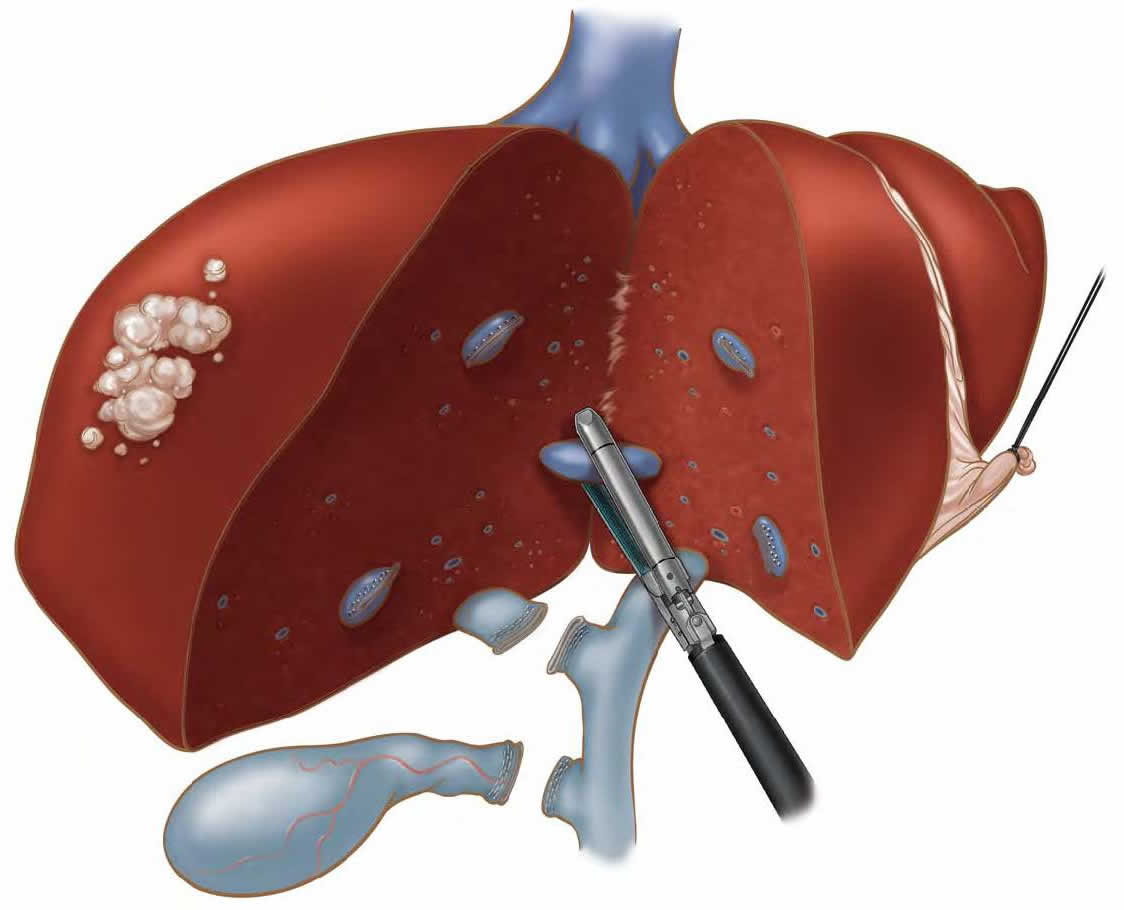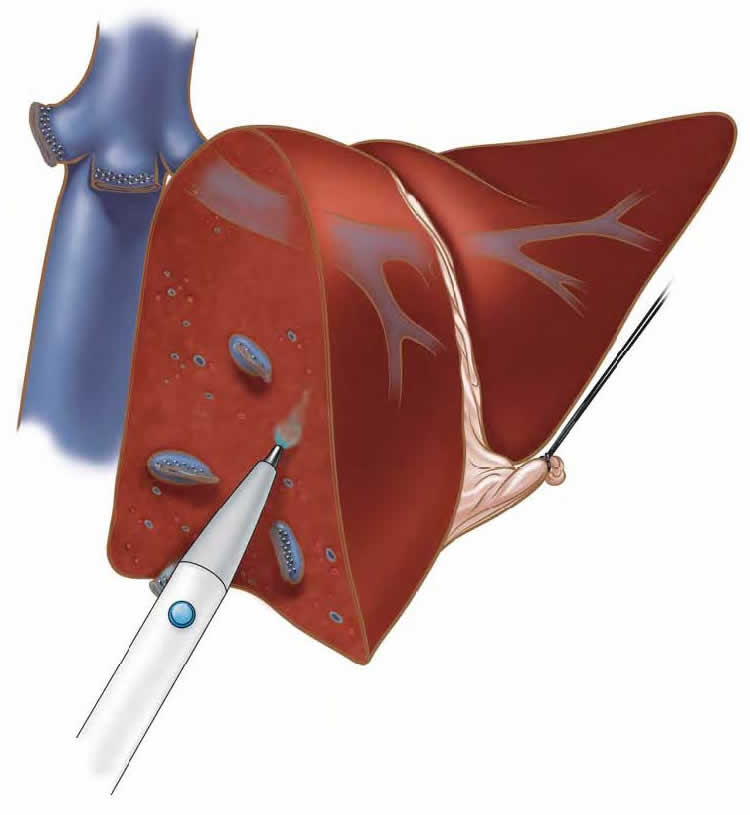Laparoscopic Liver Biopsy; Laparoscopic Partial Hepatectomy
A. The Condition. Laparoscopic Liver Biopsy is done to obtain a piece of liver that is suspected to be abnormal, so that the pathologist can make a diagnosis with the microscope. Laparoscopic partial hepatectomy is performed to remove an abnormal portion of your liver which may contain a tumor, infection, or some unknown disease. Your body normally can tolerate loss of a portion of your liver without difficulty.
B. Symptoms. As indicated above, the condition that you might have can be one of many, so there are no specific symptoms that go along with this procedure. You may have the following nonspecific symptoms:
- Weakness
- Loss of appetite
- Weight loss
- Abdominal pain
- Jaundice (yellow skin)
C. Laparoscopic Partial Hepatectomy. The surgeon will make about 3-4 small incisions in your abdomen. A port (nozzle) is inserted into one of the slits, and carbon dioxide gas inflates the abdomen. This process allows the surgeon to see inside of your abdomen more easily. A laparoscope is inserted through another port. The laparoscope looks like a telescope with a light and camera on the end so the surgeon can see inside the abdomen. Surgical instruments are placed in the other small openings and used to perform the biopsy, or to remove the portion of your liver which is diseased. Your surgeon will use a special instrument which cauterizes the liver as it is cut, so that there will be minimal bleeding. The liver specimen is removed in a plastic bag from your abdomen by enlarging one of the small incisions. After this has been accomplished, the carbon dioxide is released out of the abdomen through the slits, and then these sites are closed with sutures or staples, or covered with glue-like bandage and steri-strips. When you wake up, you may have a temporary drain or rubber tube exiting out of your skin.
D. Nonsurgical Treatment. For most tumors or masses of the liver, the best treatment is surgical removal, especially if the diagnosis is not known. In some cases, the tumor may be treated by placing a special probe into the tumor; the probe can deliver various types of energy which can destroy the tumor. Your doctor will discuss with you what your best treatment option is.
E. Risks. The primary risks of laparoscopic biopsy or partial hepatectomy are:
- Infection of the skin at one of the small ports sites
- Decrease in liver function
- Bleeding within the abdomen
- Collection of bile or pus within the abdomen
- Postoperative ileus (the intestines slow down/stop working for several days)
F. Expectations
1. Before Your Operation. Laparoscopic liver biopsy or partial hepatectomy usually is an elective procedure. The preoperative evaluation might include blood work, urinalysis, an abdominal ultrasound, and an abdominal CT scan. In some cases, endoscopy and/or x-rays of your bile duct may be performed. If you smoke, then you should stop immediately. If you are taking blood thinners (for example, aspirin, coumadin, or Plavix), then you will need to stop these one week prior to your procedure. Your surgeon and anesthesia provider will review your health history, medications (including blood thinners), and options for pain control.
2. Your Recovery. You usually can go home in 1-4 days after a laparoscopic liver biopsy or partial hepatectomy. You may need to wait until your bowels start working. You will be given medication for pain. If you have a drain, then your doctor and/or nurse will instruct you in the care for the drain. You should limit your activity to light lifting (no more than 15 lb) for one month.
3. Call Your Surgeon if you have one or more of the following:
- Severe pain
- Nausea and vomiting
- High fever
- Odor or increased drainage from your incision
- No bowel movements for three days
- Jaundice
Pertinent Reference
Demeure M. “Laparoscopic Evaluation and Staging of Intraabdominal Cancer” in Frantzides CT, ed. Laparoscopic and Thoracoscopic Surgery, St. Louis Mosy –Yearbook 1995


